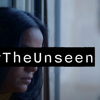The Unseen
Vision impaired people's experiences of domestic violence and abuse.
1 in 12 visually impaired people in the UK is estimated to be a victim of domestic abuse.
Released in October 2022, The Unseen is the first ever research into the shocking scale and nature of domestic abuse among blind and vision impaired people.

The Findings
The report, researched and compiled by the charity SafeLives, highlights the lack of relevant knowledge and experience among organisations and professionals working in both the fields of sight loss and domestic abuse, and puts forward proposals for how to tackle the challenges and break down the barriers to help.
- 1 in 12 visually impaired people in the UK is estimated to be a victim or survivor of domestic abuse, translating to 188,000 likely victims or survivors.
- Disabled people are three times more likely to experience abuse from more than one person in their lifetime.
- Less than 1 in 5 domestic abuse professionals have had specialist training to support visually impaired victims or survivors.
- Abusers use tactics specific to their blind or partially sighted victim, such as: placing objects in the way to cause falls, preventing them from using mobility aids such as guide dog or white cane, withholding or hiding medicines.
- Some survivors are encouraged to stay with the abuser by family members or support services, as the abuser is perceived as their carer and ‘best option’.
- Lack of accessibility and confidentiality are major barriers to visually impaired victims or survivors seeking help.
- 3 in 4 domestic abuse professionals either don’t know about their organisation’s accessibility policies, or don’t know if they have them.
- 3 in 4 domestic abuse professionals don’t know if their social media services are accessible.
Download, read and share the report
We're calling for a multi-faceted and united response to this abuse experienced by some of the most vulnerable people in our society, in some cases by the people they trust and depend on for every part of their daily lives, including:
Guidance
We must develop best practice. Guidance is needed around working with victims and survivors with a visual impairment, including toolkits for practitioners, and clear referral pathways.
Training
We must train domestic abuse practitioners and sight loss professionals on the specific needs of visually impaired victims and survivors, on risk factors, safety planning, identifying abuse and referral pathways.
Services
We must ensure that all domestic abuse information, services and premises are accessible to those with visual impairments. Professionals should create opportunities to see individuals one-to-one and without a carer, and create safe spaces in which to enquire about domestic abuse and their safety.
Advocacy
We must engage with the community to build trust and raise awareness of domestic abuse, including the development of a visual impairment survivors’ network where survivors can share their experiences and help to shape future research, learning and actions taking place.
Awareness
We must disseminate this and future research in order to achieve improvements in policy, practice and awareness in order to address the harm of domestic abuse in the sight loss community.
Investment
We must ensure that funds are available for organisations to be able to implement changes and meet urgent need.

